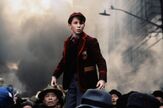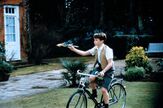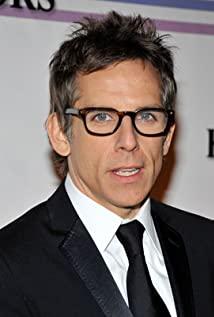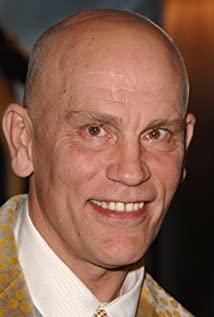In 1987, Spielberg went to China to film "Empire of the Sun". Prior to this, the Warner boss who invested in this film had a year-long negotiation and negotiation with the Chinese side, and finally got the great opportunity of shooting in Shanghai for 21 days.
Spielberg's first filming in China was naturally ignorant of China. Of course, Spielberg has also made a film involving Shanghai themes before, that is "Indiana Jones 2" shot in 1984. The adventure scene in the beginning of this film is set in Shanghai.
However, the Chinese side did not agree to filming the film in Shanghai, China. Therefore, in this film, there is almost no real scene of Shanghai. Even if there are some shots of Shanghai, it is obviously a fake Shanghai.
But what makes this movie more interesting is that it reflects Spielberg's ignorance of Chinese geography.
In the film, after a short adventure in Shanghai, the protagonist boarded a plane, flew to Chongqing, and then traveled across the Qinghai-Tibet Plateau to India. The main plot of the movie's story is placed in India. It can even be said that Hollywood may be more familiar with India than China.
In the movie, after the plane leaves Shanghai, the next shot is the plane flying over the Great Wall. In the eyes of Westerners, shooting a Chinese-themed film does not seem to be a hero without showing the Great Wall. It was not until a group of Hollywood planners conceived the idea of "The Great Wall", and then they found the best Chinese director in their eyes, and shot a magical film "The Great Wall" that was also seriously inconsistent. The plot and the theme of foreigners saving China, even if Zhang Yimou is in charge, cannot change the naivety and wrongfulness of Hollywood's imagination of China.
Therefore, Spielberg was both excited and at a loss when he went to China to make a movie. Fortunately, Shanghai has a group of excellent filmmakers, and their cooperation is undoubtedly Spielberg's life-saving straw.
At that time, Yan Geling, known as the only "Hollywood professional screenwriter" in China, had not yet gone abroad. The script she wrote was once filmed by Shanghai Film Studio, so Spielberg could not get the help of Chinese screenwriters. Of course, Hollywood movies have never Nor will Chinese people be invited to write the screenplay. Therefore, Geling Yan is a "Hollywood professional screenwriter" whose script has not been filmed by Hollywood.
China's major directors will not become Spielberg's first choice. The Shanghai Film Studio had China’s most famous director Xie Jin. It can be said that Xie Jin’s director style is closest to Hollywood movies. In terms of the smoothness of the film, the fullness of the picture and the focus on portraying characters, Xie Jin’s style is similar to that of Spielber. The proximity of Ge's style was almost unmatched among Chinese directors at the time.
But Xie Jin was at a low point in his creative career. He is being caught by a comment killer from Shanghai, strangling his throat tightly, unable to breathe.
This is how a Shanghai professor named Zhu Dake strongly criticized Xie Jin in a highly gunpowder-flavored "Flaws of Xie Jin's Film Model" in 1986. This article has since put the "Xie Jin model" into the black jail, and stepped on a few more feet. After that, whoever mentions the "Xie Jin" model is lagging behind the times and self-determining the audience.
For a long time after this, the absurd phenomenon of "ugly stars" appeared in China. It was not until the emergence of Xiao Xianrou that the aesthetics of Chinese films returned to normal and embarked on a normal track. But Chinese movies have paid a heavy price for their detours, and the Xie Jin model, the Hollywood model, has regained the dominant position in Chinese movies.
Zhu Dake's use of a sword to seal his throat made Xie Jin devastated, and the wave of Chinese film apprenticeship in Hollywood was thus blocked. When Xie Jin faded out of the Chinese film scene, it was the time when the fifth-generation directors Zhang Yimou and Chen Kaige entered the film world.
At that time, Zhang Yimou and Chen Kaige's "Red Sorghum" and "Yellow Land" can be said to be completely different from Hollywood movie styles. These are known as the representative films of the fifth generation of directors, and almost all come against the taste of the audience. In these films, the storyline is downplayed, the camera is slowed down, and the idea of conceptualization is promoted. When Chen Kaige later filmed "King of the Child", he was already close to zero copy. The Chinese film market has already found it difficult for these lonely and self-admired college directors to bear. .
"Kid King" stills
Fortunately, Chen Kaige retired bravely, and shot a dynamic and completely learning Hollywood movie style "Farewell My Concubine", only to announce that the Xie Jin model that was strangled by Shanghai critics has returned. Zhang Yimou also abandoned his early work in "Red "Sorghum", "Raise the Red Lantern" and "Judou", the sluggish mirror language of the lens began to follow the Hollywood movie style. In "The Great Wall", Zhang Yimou became a craftsman equivalent to the level of a third-rate Hollywood director.
"Raise the Red Lantern" stills
When Spielberg went to China to make a movie in 1987, Xie Jin, the Chinese heir to his technique, was being criticized and it seemed outdated.
At that time, Shanghai Film Studio was a cooperative unit of the Chinese side and provided three to four hundred people for assistance. Among these people, the United States needed Chinese artists the most. Obviously, the pictures in the movie lens have a great relationship with the drawing of the artists. . The Chinese artists can reproduce the old scenes of the era reflected in the film based on their understanding of Chinese local culture. No matter how great Spielberg is, he must also use the Chinese artists to restore the old scenes.
Therefore, the U.S. paid the highest salary to Chinese artists at that time, which was $45 per day on a daily basis. The next salary: $40 for the director of production, followed by: $25, 20, 15, 10, etc.
Sketches designed by Chinese artists
Scenes in the movie
In fact, the U.S. has done some tricks and has not paid Chinese personnel corresponding salaries in accordance with international practices. At that time, the regular international market price of art was 400 US dollars a day. It can be seen that the salary paid by the US to Chinese art workers is only one-tenth of the international practice, but such a price is already an astonishing price for Chinese workers. At that time, the normal monthly salary of an art artist was 80 yuan. Calculated according to the exchange rate at the time, Hollywood's salary for a Chinese art artist was close to about 180 yuan a day, and the Chinese staff were almost shocked.
Not only did individuals react strongly to the super high pay, but the Chinese partners also felt that working for Hollywood was too cost-effective. In the words of the people from the Shanghai Film Studio at the time: "We deducted more than $1 million from him in twenty days, and we are very satisfied."
Looking at Spielberg from the perspective of the Chinese, he feels that Spielberg is really wealthy regardless of cost.
The big prospect of overhead shots has great demand for the number of people
At that time, the US asked the 5,000 refugees who appeared in the movie how much clothing should they prepare? The Chinese replied that it is enough to prepare 500 props for the event. The group performance on the long-range scene is not clear in the lens anyway, as long as you make a gesture, you don’t need clothes. Just like the army on the beach in "Dunkirk", the shadowy troops in the distance are replaced by figures on the drawing board. It can be seen that "smart shooting" is the practice of filmmaking in China and the West, but the United States is a big lion. Let the Chinese prepare 5,000 fleeing costumes for group performances.
At that time, the film crew used airplanes to transport some of the props needed in the movie, such as American cars and Japanese fuel tanks, to Shanghai, which satisfies some of the props provided by foreigners in the movie, but Chinese specialty rickshaws can only be solved locally.
How much should the US prepare for the rickshaw when soliciting the opinions of the Chinese side? The Chinese artist believes that forty to fifty rickshaws in a movie are not bad, and the picture looks very thick. The US has mastered China's bottom-line data and will immediately add 80 vehicles to the 50 vehicles. There can’t be all rickshaws on a street. What should I do if there are too many? The U.S. gave a clear reply, and if there are too many, it will be used as a backup.
The Chinese are naturally happy to see that the US spends money like water, and is happy to take the American money to buy props for him.
It's just that the salaries that the American crew offered to the Chinese people at the time seemed to be sky-high, and they were not allocated to individuals, but were completely owned by the unit at the time, that is, the Shanghai Film Studio. At that time, in addition to salaries for Chinese personnel, the United States also provided a food allowance of US$8 per day, which was also paid to the public. The personal benefits of the Chinese staff probably means that they can only enjoy the free coffee, orange juice, chocolate, and biscuits provided by the crew.
For the remuneration on the Chinese side, the Shanghai Film Studio will provide a daily subsidy of RMB 80 per day to more than 400 Chinese personnel. This is the normalization of Sino-foreign cooperation under the special national conditions of that era.
At that time, the Chinese people who participated in the filming also had to conduct ideological education and told them not to talk to foreign personnel too much, and to be neither humble nor arrogant in the filming. Later, after the filming was over, the U.S. personnel found that none of the registered costumes and props used by the extras were missing, which greatly sighed the U.S. member. The Chinese in the early days of reform and opening up were still very simple. Although they didn't have much money in their hands, they all had the sense of dignity of the country. They knew that participating in the shooting of a movie represented the country and should not lose the face of the country. This is no longer the same as today's professional group performance.
The far-reaching influence of Spielberg's filming in Shanghai is not only that "Empire of the Sun" was recorded in film history as a film reflecting the living conditions of the anti-fascist front in the East during World War II, and its significance to the promotion of the Chinese film industry is also obvious. That is to rent the Bund to let the crew shoot on site. Obviously it is unrealistic. China must have its own filming base.
The next year after the filming of Spielberg, that is, in 1988, Shanghai Film Studio put the establishment of a film and television base on the agenda. This base is today's Shanghai Film and Television Park, also known as Chedun Film and Television Base, which now reflects Shanghai. Most of the movies on the subject are shot in real scenes in the man-made settings here. Such as "Lust Caution", "New Shanghai Beach" and so on.
In this sense, Spielberg's trip to Shanghai brought about a revolution in the development of China's film industry. It not only gave the Chinese people a monetary stimulus, but also a renewal of film concepts.
View more about Empire of the Sun reviews











